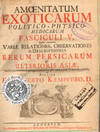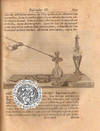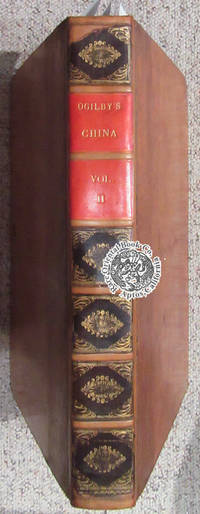Carousel content with 1 slides.
A carousel is a rotating set of images, rotation stops on keyboard focus on carousel tab controls or hovering the mouse pointer over images. Use the tabs or the previous and next buttons to change the displayed slide.
-
 Slide 1:
Slide 1:
-
 Slide 2: no title
Slide 2: no title -
 Slide 3: no title
Slide 3: no title -
 Slide 4: no title
Slide 4: no title -
 Slide 5: no title
Slide 5: no title -
 Slide 6: no title
Slide 6: no title -
 Slide 7: no title
Slide 7: no title -
 Slide 8: no title
Slide 8: no title -
 Slide 9: no title
Slide 9: no title -
 Slide 10: no title
Slide 10: no title -
 Slide 11: no title
Slide 11: no title -
 Slide 12: no title
Slide 12: no title -
 Slide 13: no title
Slide 13: no title -
 Slide 14: no title
Slide 14: no title -
 Slide 15: no title
Slide 15: no title -
 Slide 16: no title
Slide 16: no title -
 Slide 17: no title
Slide 17: no title -
 Slide 18: no title
Slide 18: no title
by [KAEMPFER, Engelbert D.] KAEMPFERO, Engelberto D.
Lemgoviae 1712, Meyeri.New half leather over marbled boards, engraved frontis piece & vignette on title,16 folding plates 60 full-page plates,8 half-page engravings, total of 91 fine copper-etched engravings,paper'toned," faded red edges,912p. . *** **** *** . . . THE FULL & COMPLETE TITLE: . . . AMOENITATUM EXOTICARUM POLITICO-PHYSICO MEDICARUM . . . FASCICULI V, QUIBUS CONTINENTUR VARIONES, OBSERVATIONES . . . & DESCRIPTIONES RERUM PERSICARUM & ULTERIORS ASIAE, . . . MULTA ATTENTIONE, IN PEREGRINATIONIBUS PER UNIVERSUM . . . ORIENTEM, COLLECTAE, AB AUCTORE . . . ENGLEBERTO KAEMPFERO, D. . . . THE FIRST & ONLY ORIGINAL EDITION 1712 (truncated) . . *** About half of this work is devoted to Kaempfer's travels in Persia [see below], with stunning copper etchings documenting his travels and recording the flora & botanical specimens he found of interest of that desert region. Of interest are the plates of date palms and other unique desert fruits. The balance of the work convers Japanese medicine, acupuncture, flora, medical pharmacopeia & botany. . *** RARITY: The book is rare and appears to be from a very small printing of this fascinating work. Few complete copies are found in world libraries. [See WorldCat] . *** Complete in 5 Fascicles. . The contents: Fasciculus I: Complectens relationes de aulae Persicae stau hodierno. [16 relationes]. * Fasciculus II: Contiens relationes & observationese historico-physicas de rebus variis. [14 relationes]. * Relatio XIII: Chartopeia Japonica, [caracteres Chinois]. * Relatio XIV: Regnum Japonicae optima ratione, ab egressu civicum, & exterarum gentium ingressu & communione, clausum, [caract. Chinois]. * Fasciculus III: Contiens Observationes physico-medicas curiosas [16 observationes]. * Obs. XI: Curatio colicae per Acupuneturan, Japonibus usitata. * Obs. XII: Moxa, praestantissima cauteriorum materica, Sinensibus Japonisbusq; multum usitata,[charact. Chinois]. * Obs. XIII: Theae Japonesis historia [caract. Chinois et planches]. * Fasciculus IV: Contiens Relationes Botanico-historicas de Palma dactylifera in Perside crescente. [10 relationes]. * Fasciculus V. Contiens Plantarum Japonicarum, quas regnum peragranti solum natale conspiciendas object, nomina & characteres sinicos; intermixtis, pro specimne, quarundam plenis descriptionibus, una cum Iconibus. Cont: catalogus planarum fasiculi v in quinque calasses distributi, quarum exhibet. . Classis: 1. Plantas volgo dictas bacciferas & pruniferas. 2. PL. pomiferas & Nuciferas. 3. Pl. Oleraceas & Frugiferas. 4. Pl. specioso flore conspicuas. 5. Pl. miscellaneas. . Index: contains [32] unnumbered pages. . *** NOTE: While Kaempfer states "Chinese characters" in the text, actually what he meant to say was Japanese Kanji characters "borrowed" from the Chinese [Hanzi]. . *** THE AUTHOR: Engelbert Kaempfer [1740-1812], was a German doctor, and is best known as the director of the Deshima factory in Nagasaki, Japan from 1779-1780 & 1781-1784. Also his classic work: THE HISTORY OF JAPAN, 1827 & 1828 was his most stunning contribution to information on Japan at the time, their flora, especially the tea camellia, acupuncture, hand paper-making, and medical studies relating to acupuncture and the use of moxibustion as a cauterizing & therapeutic agent. He also addresses herbs, pharmacopeias such as ginseng, moxa, ginger and other medicinal plants, most of which were unknown to the western world at this time. . *** In 1683 he joined the Swedish embassy to visit the Shah of Persia. The embassy traveled from Moscow, via Kazan, Astrakhan, across the Caspian Sea to Isfahan, the capital of Persia. Kaempfer ventured out along the way, exploring other areas by the Baku on the Caspian Sea. He was an avid student and mastered the Persian language, which enabled him to then focus on that country's flora, fauna and geography. The results of these studies are found in this text, with especial focus on the flora. . Upon return to Sweden, Kaempfer joined the Dutch East India Company, where he was appointed chief surgeon in the Persian Gulf. He explored Arabia, the west coast of India and finally ended up in Batavia, where he focused on Javanese natural history. While there, he met several people who had been stationed in Deshima, Japan, and some Japanese. At his request, he was appointed chief surgeon to Deshima where he studied all aspects of the Japanese. He also taught Dutch and European medicine to a select few Japanese then who called themselves "Rangakusha" or Dutch students/scholars. . His resulting early and important "HISTORY OF JAPAN," London 1727 introduced many new things to the western world. His essays and illustrations on Japanese acupuncture, moxa, paper-making, natural history, use of cannabis, opium, tobacco and amber shed new light on medical practice in Japan. In many ways the current work resembles the "HISTORY OF JAPAN" in that it outlines similar subjects and in depth essays and extensive illustrations of flora [fruits, vegetables], and fauna found in Persia. He also discusses local customs, musical instruments, costume, fruits and a variety of unusual plants found in the desert and oasis of that area. . In the present work Kaempfer devotes 502 pages to Persia, with 42 stunning copper etched plates, some fold outs. including acupuncture, a long chapter on the Persian date palm, and a variety of cultural, fauna and flora essays. He also attaches an extensive catalogue of Japanese plants with their names and Kanji characters in the text. He adds 47 botanical and other copper etched plates with a map to the last part of this work. . *** THE ENGRAVED PLATES: The plates found in this text are either large fold-outs, single full page, or one half or one third text illustrations. The fold-outs and full single page plates are copper etched, while the text illustrations may be wood cuts or possibly copper etched. The distinguishing "plate mark" is difficult to find on the text plates, while on the others this is very clear. . The list of plates cited on the website of Shinku Nichibun [cited below] has a list of all 91 engravings, including the frontispiece. There are 16 foldouts, the balance are full page or half pages or text plates [1/2 or 1/3 page]. . The book measures 18 x 23 cm., therefore folding plates are double or triple that size, single page are 18 x 23 cm., and one half-page plates are ca. 18 x 12 cm. . *** A fascinating and early primary resource. Written Latin by an astute and scholarly, trained medical physician and keen observer. He writes with careful analysis of where he went, what he saw, who he met, where he traveled and above all recorded a great number of hitherto unknown plants of Asia, many of which are named in Kanji [Japanese & Chinese characters], with the native name as well as Latin names, and descriptions, illustrating a grand number. . *** RARITY: This book is quite rare, and seldom found complete. Our copy contains all plates & text, with some toning to the pages, some corner wear. By and large, an excellent early resource on the plants medicinal plants of Asia, with Chinese characters in the index and also an index to plant names. Also Amoenitatum Exoticarum which contains Relationes Botanico-Historicas de Palma Dactylifera in Perfide crefcente...et al. . Kaempfer has written the first scientific flora of Japan. He illustrates and discusses such important plants as ginseng, the tea camellia, persimmons, and other fruits and vegetables unknown in the western world. . *** CONDITION: . Copy 1: This is nicely rebound in half-leather, with a red leather label and 2 lines of gilt lettering. The text and plates are bright, a very clean copy, with white paper and excellent text and engraving impression. There are a few minor and unimportant small tears, folds, and the like which do not greatly detract from the overall condition. The top edge is black, the front and lower edges are green. Two old library stamps on the title page, else no other marks. There some old small closed tears, folds, a few tiny hole & other issues most of which have be expertly restored using Japanese handmade Washi paper. The work is sound and solid. . There are 2 ex-library stamps on title page & one more discreet stamp on p.67. . The text is bright and clean. green edges. . See photos of title page & bindings on our website: see title.jpg & cover.jpg. . *** THE PLATES: The list of plates cited by Shinku Nichibun has a total of 91 plates including the etched frontispiece. Our copy lacks plate #33 [Lausirasi urbis]. There are two extra plates which are not listed. In all therefore this copy has a total of 91 plates in all. There are 16 folding plate, the balance are either single full page, or text illustrations [half or one-third page]. . *** CONDITION: . Copy 2: Nicely re-bound in half leather, with raised bands and a lovely red label with 3 lines of gilt lettering. The paper is well toned, one facsimile frontispiece + another facsimile plate inserted. The title page appears to be skillfully re-backed with acid-free paper and stabilized. A bump to the top edge affects a small nick in the margin of several pages, a few plate stains, all in all a solid example. Page edges in faded red. Text is a bit 'toned' and browned, else solid. . THE PLATES: The list of plates cited by Shinku Nichibun has a total of 91 plates including the etched frontispiece. Our copy lacks plate #33 [Lausirasi urbis]. There are two extra plates where are not listed. In all therefore this copy has a total of 91 plates in all. There are 16 folding plate, the balance are either single full page, or text illustrations [half or one-third page]. . See photos of title page & bindings on our website: see spine.jpg & illus14.jpg . *** Both copies were neatly rebound in the past, perhaps more than 40-50 years ago. Both copies are solid with firm bindings, new endpapers. The title pages were printed in red and black ink, all illustrations were copper etched. . *** !! NOTE: RE: DEFECTIVE REPRINTS: Beware of fuzzy, incomplete, defective REPRINTS, which lack the called for 91 plates, diagrams and drawings. . *** Color photos are posted to our website. . *** REFERENCES: . H. Cordier: JAPONICA columns 411-412. He also cites: "Cat. Mourier, no. 429, 10 fr" at the end of his citation. * ALT JAPAN KAT. 699. * Nissen, BBI 1018 * Stafleu 3483 * Hunt 427 * Wellcome III, p.376 * Nissen (Bot. Buchill.) 1018. * Brunet III: 636 * Gordon E. Mestler: A GALAXY OF OLD JAPANESE MEDICAL BOOKS WITH MISCELLANEOUS NOTES ON EARLY MEDICINE IN JAPAN. See p.470 et al. for Kaempfer, [Mestler mis-spells it "Kampfer" [sic] and moxa. Pleases inquire with us for copies of this major bibliographical reference resource. * Shinku Nichibun: Cites this book, and gives a complete list of the plates. Following is a correction to that list: plate # 12 is on p.262; text plate on p.548 omitted; plate # 56 is on p.697. Often books of this period had pages mis-numbered and plates inserted at different locations regardless of the fact [most] each plate has an associated page number within the etched area, to assist in placement. See link: shinku.nichibun.ac.jp/kichosho/new/books/24/suema0000 00006ln.html . * .
(Inventory #: 95204302)

![Rare Oriental Book Co. [An Art & Intellectual Property Company]](https://www.abaa.org/images/shop_logos/dragon.gif)

